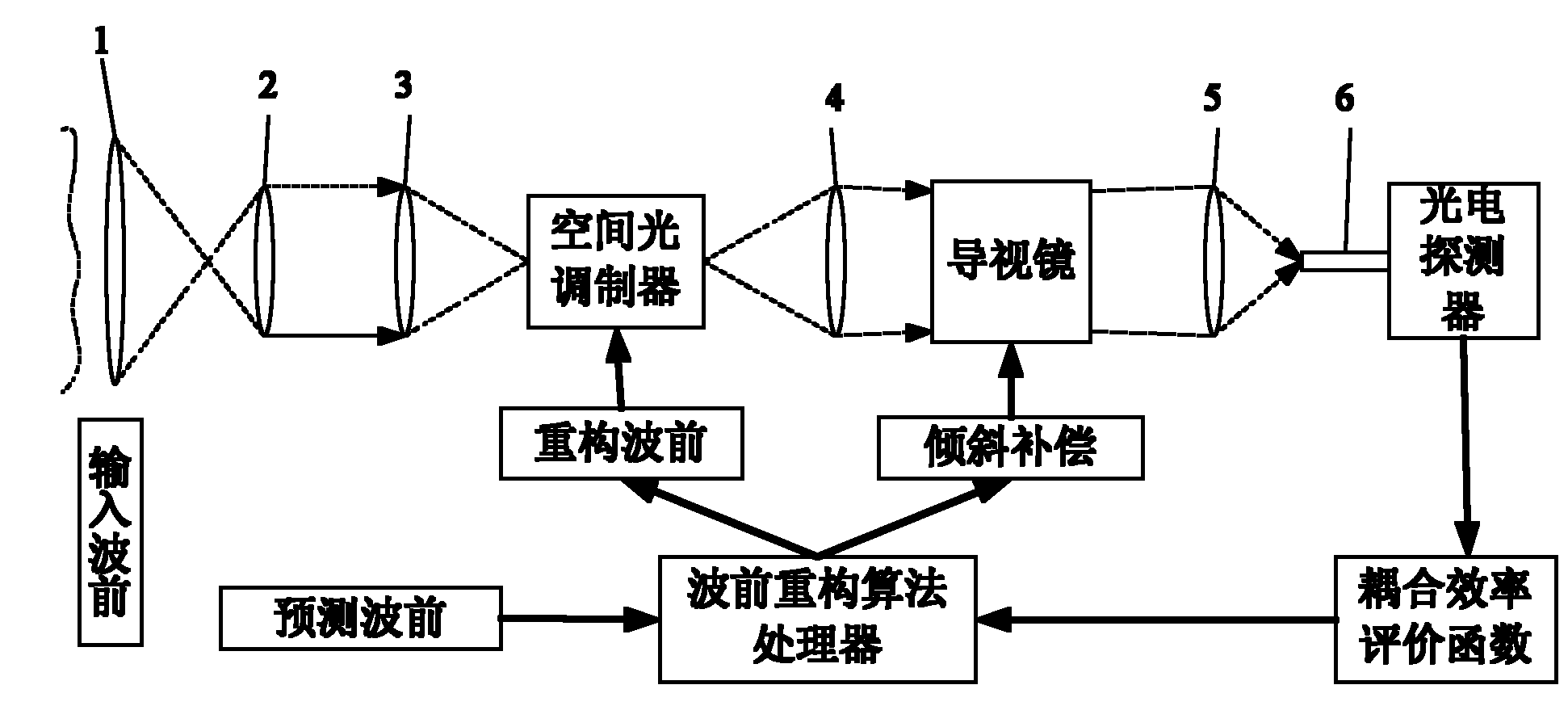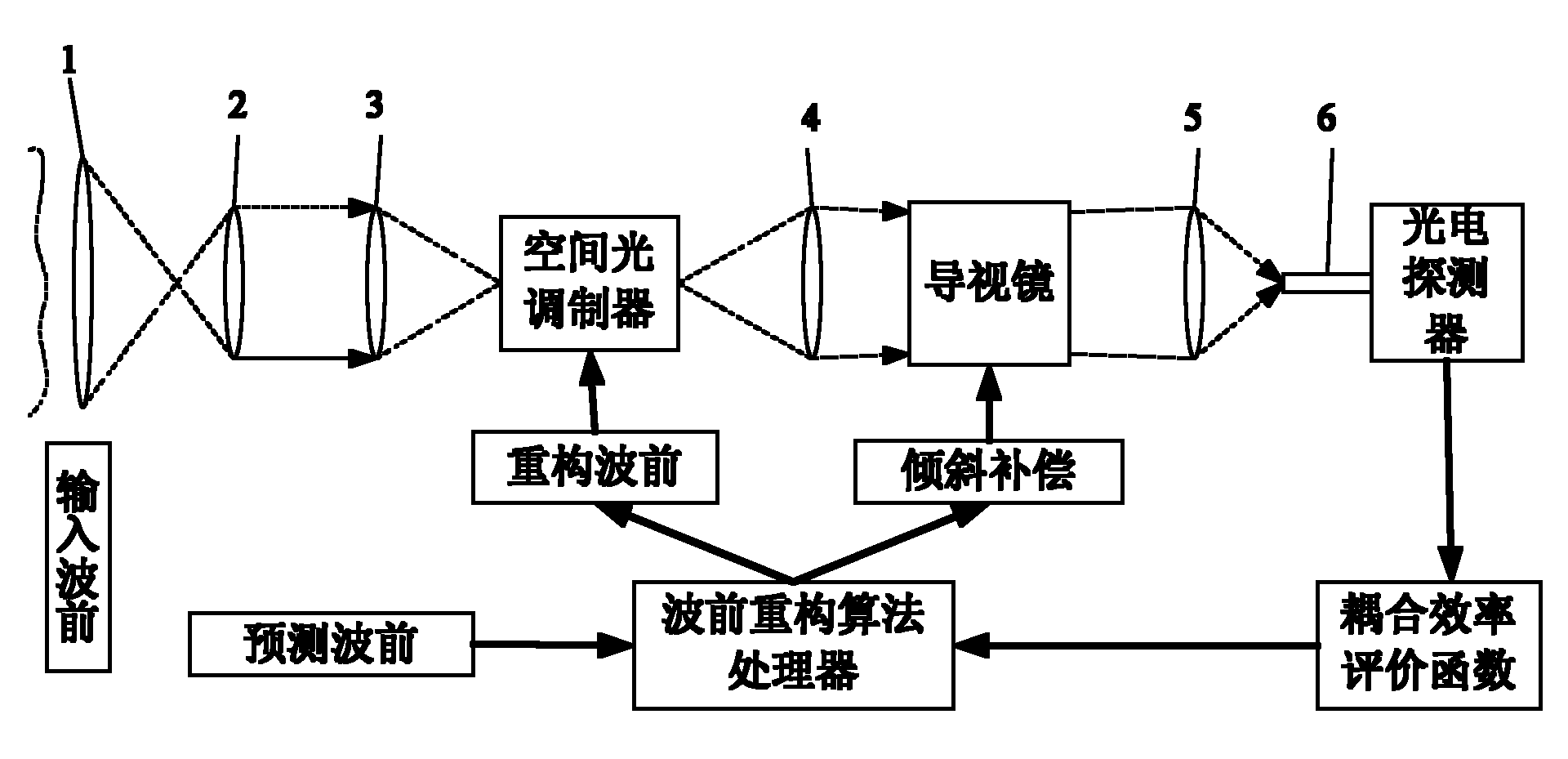Novel self-adaptive optical method and system of wavefront-free sensor
A technology of adaptive optics and wavefront sensors, applied in the field of optical communication, can solve the problems that the response speed cannot meet the fast requirements of the space optical communication system, the coupling energy attenuation effect is not obvious, and the high-order distortion cannot be compensated, etc., so as to eliminate Signal flicker effect, light weight, eliminate the effect of signal flicker
- Summary
- Abstract
- Description
- Claims
- Application Information
AI Technical Summary
Problems solved by technology
Method used
Image
Examples
Embodiment 1
[0060] Example 1. A Novel Adaptive Optics Approach Without a Wavefront Sensor
[0061] The method includes the following steps:
[0062] a. Use statistical predictive analysis methods to establish an initial wavefront.
[0063] This is the key to the technology of the present invention. According to the characteristics of atmospheric turbulence, various turbulence models are statistically analyzed to establish an adaptively adjustable initial wave front as a reference wave front for correcting the distorted wave front. The method is to perform variational processing on the refractive index structure functions of various turbulence models, use the multi-layer turbulence atmospheric model, and then use the Zernik wave front model to statistically analyze the initial wave front in the circular domain.
[0064] The initial wavefront is used as the reference wavefront for wavefront correction. In the subsequent wavefront reconstruction genetic algorithm, adaptive adjustment will b...
Embodiment 2
[0075] Example 2. Novel adaptive optics system without wavefront sensor
[0076] The structure of the novel adaptive optics system without wavefront sensor is as follows figure 1 As shown: the system is mainly composed of an optical receiving aperture lens 1, a beam collimating lens 2, a first converging lens 3, a spatial light modulator, a collimating lens 4, a guide mirror, a second converging lens 5 and a photodetector 6 , they are in turn connected by optical path signals.
[0077] The invention provides the above-mentioned novel adaptive optics system without a wavefront sensor, and its application in high-speed space optical communication or optical imaging.
[0078] The specific application process of the novel adaptive optics system without wavefront sensor of the present invention is as follows:
[0079] The first step, beam convergence and shaping:
[0080] The optical receiving aperture lens 1 of the receiver converges the light beam from the transmitter end of t...
PUM
 Login to View More
Login to View More Abstract
Description
Claims
Application Information
 Login to View More
Login to View More - R&D
- Intellectual Property
- Life Sciences
- Materials
- Tech Scout
- Unparalleled Data Quality
- Higher Quality Content
- 60% Fewer Hallucinations
Browse by: Latest US Patents, China's latest patents, Technical Efficacy Thesaurus, Application Domain, Technology Topic, Popular Technical Reports.
© 2025 PatSnap. All rights reserved.Legal|Privacy policy|Modern Slavery Act Transparency Statement|Sitemap|About US| Contact US: help@patsnap.com


